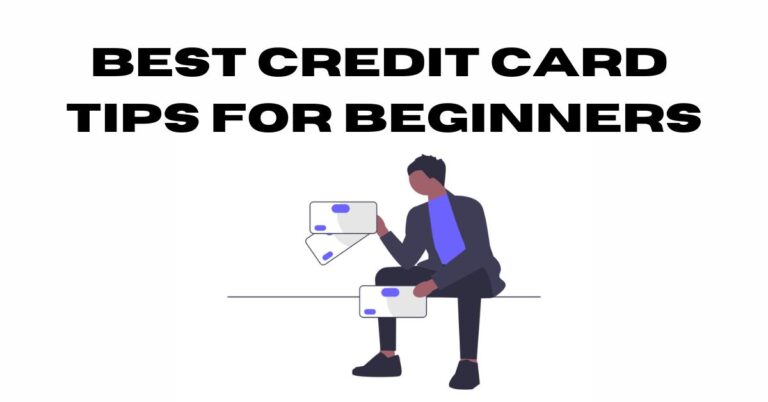75 SEO Interview Questions for Beginners to Experts (2024 Update)
Getting ready for an SEO interview can feel overwhelming, especially if you’ve felt the pressure of keeping up with Google’s frequent updates or trying to boost your site’s visibility.
Many dive into SEO because they see how much it impacts a business’s success online. If you’ve been there, struggling to rank higher or draw more traffic, these SEO interview questions are designed to help.
They’ll prepare you for job interviews and deepen your SEO knowledge, making sure you’re set to impress with both basic and advanced insights.
Let’s get you prepped and confident to tackle those questions!
Why Review for Interview Questions as an SEO?
Interviewing takes a ton of effort from both your side and the hiring managers. Making sure that you’ve covered all of the plausible questions that might come up shows that you’re not only willing but also well-prepared as an SEO when it comes to these types of situations.
What are the Best SEO Interview Questions That Are Most Likely to Be Asked?
Here are variations of interview questions that you can expect at an SEO interview. From beginner to advanced, you can pick up and take reference from each and every one of these questions below:
Beginner SEO Interview Questions
If you have an upcoming interview as a newbie SEO, you can expect the hiring manager to ask you the following questions.
1. What is SEO and why is it important?
SEO, or Search Engine Optimization, is the practice of making your website more visible in search engines like Google. When your site shows up higher in search results, more people can find and visit your site.
This is key because most people find new websites through search engines. SEO helps increase the number of visitors without having to pay for each click, making it a cost-effective way to grow your site’s traffic over time
2. Can you explain the difference between on-page and off-page SEO?
On-page SEO involves making sure everything on your website is set up to be understood and liked by search engines. This includes the content you write and how you organize it with HTML tags.
Off-page SEO is about boosting your site’s reputation through other sites, mainly through getting backlinks—these are links from other sites to yours, showing that your site is trusted and valuable
3. What are keywords and why are they important?
Keywords are the words and phrases that people type into search engines when they’re looking for something. They are important because they guide what kind of content you should create to meet the needs of searchers.
Using the right keywords helps your pages show up in search results when people are looking for something you offer
4. What is a meta description and what role does it play in SEO?
A meta description is a short summary that describes what’s on a web page. It shows up under your page’s title on search results pages.
While it doesn’t directly affect your search ranking, a clear and engaging meta description can make someone more likely to click on your link.
More clicks can improve your page’s visibility and performance in search results.
5. Can you describe what a backlink is and why it is important for SEO?
A backlink is when one website links to another. Think of each link as a vote of confidence.
Search engines like Google use these as major cues to determine if your site is a credible source. Websites with more high-quality backlinks tend to rank better because they’re seen as more reputable.
6. What tools have you used for SEO analysis?
For SEO analysis, several tools can be really helpful. Google Analytics is great for tracking website traffic and user behavior.
Google Search Console helps you see how your site appears in search results and checks for errors. Tools like SEMrush or Ahrefs are fantastic for deeper SEO insights, like checking backlinks, keyword rankings, and competitor analysis.
These tools make it easier to see what’s working and what needs improvement.
7. What is the purpose of the robots.txt file?
The robots.txt file tells search engine robots which pages on your site they should not visit and index. It’s like a guide that helps search engines understand which parts of your website are off-limits, ensuring that your site’s private or less important areas don’t get included in search results.
8. What are the common SEO practices you follow when creating a new webpage?
When creating a new webpage, I make sure to use relevant keywords naturally in the content, especially in the title, headers, and first paragraph.
Adding alt text to images, ensuring the URL is clean and descriptive, and making the site mobile-friendly are also key practices. Plus, creating internal links to other pages on the site helps search engines and users navigate more easily.
9. Can you explain what a sitemap is and why it’s important?
A sitemap is a map of your website that lists all your pages and posts, making it easier for search engines to find and index your content.
It’s important because it helps search engines discover all your content, even if internal linking isn’t perfect.
This can speed up the indexing process and improve your site’s visibility in search results.
10. What do you mean by ‘keyword stuffing’ and why should it be avoided?
Keyword stuffing refers to overloading your webpage content with too many keywords in an unnatural way.
It should be avoided because it can make your content difficult to read and might lead search engines like Google to penalize your site, harming your rankings.
It’s better to use keywords thoughtfully and focus on making content helpful for users.
CONSIDER READING: How Do You Convert Your Readers Into Customers?
11. What is the difference between 301 and 302 redirects?
A 301 redirect tells browsers and search engines that a webpage has permanently moved to a new location.
It’s like telling your friends you’ve moved to a new home and they should update your address in their contacts. A 302 redirect, however, is temporary—like telling people you’re on vacation for two weeks.
Search engines treat these differently; a 301 passes most of the SEO value to the new page, while a 302 does not.
12. How do search engines like Google determine the ranking of websites?
Google uses algorithms to evaluate websites based on hundreds of factors, such as the relevance of your content to the search query, how user-friendly your site is, and the number and quality of other sites that link to yours.
They aim to provide the most useful and relevant results to users, so they constantly update their algorithms to better understand and serve user needs.
13. What is meant by the term ‘SERP’?
SERP stands for Search Engine Results Page. It’s the page you see after entering a query into a search engine.
It lists all the webpages that are relevant to your search, usually with organic search results based on relevance and quality, along with paid advertisements.
14. Can you explain what ‘organic traffic’ refers to?
Organic traffic is any traffic that comes to your site from unpaid search engine results.
It happens when someone finds your website by searching for something in a search engine and clicks on your link because it seems useful, not because it was a paid ad.
It’s valuable because it is targeted; people are visiting your website because they were specifically looking for something you offer.
15. What do you understand by ‘page speed’ and why is it important?
Page speed refers to how quickly a webpage loads for a user. It’s important because faster pages provide a better experience for visitors, keeping them engaged longer.
If a page loads slowly, visitors might leave before they even see what you have to offer.
Search engines like Google consider page speed when ranking websites because they want to promote sites that provide a good user experience.
16. How would you improve a website’s search engine ranking?
Improving a website’s search engine ranking involves several strategies: optimizing content with relevant keywords, improving page speed, ensuring the site is mobile-friendly, and using descriptive and engaging meta tags to improve click-through rates.
Regularly updating content and acquiring high-quality backlinks from other reputable websites can also significantly boost rankings.
17. What are long-tail keywords and why might they be valuable?
Long-tail keywords are phrases that are more specific and usually longer than more commonly searched for keywords.
They are valuable because they’re less competitive than shorter, more general terms and tend to attract more qualified traffic.
People using long-tail keywords are often further along in their buying journey and more likely to convert to actual sales or leads.
18. What is meant by ‘bounce rate’?
Bounce rate is a metric that measures the percentage of visitors who land on your website and leave without visiting any other pages.
A high bounce rate might indicate that your site is not relevant or engaging enough for visitors, or that your pages load too slowly.
Improving content relevance, site navigation, and page load speed can help reduce the bounce rate.
19. Can you explain what a ‘nofollow’ link is?
A ‘nofollow’ link is a type of link that tells search engines to ignore that specific link when ranking websites.
This means the link does not pass on SEO benefits like ‘link juice’ to the site it’s linking to.
Nofollow links are often used when linking to untrusted content or in paid links to prevent manipulation of search engine rankings.
20. What strategies would you use to generate more backlinks?
To generate more backlinks, you can create high-quality, valuable content that others want to link to.
Engaging in guest blogging, collaborating with other brands, and participating in industry forums can also help.
Another effective strategy is to reach out to relevant websites and suggest where they might include links to your content.
ALSO CHECK: How to Repurpose Your Website Posts Into LinkedIn Posts?
21. How do you stay updated with SEO trends and algorithm changes?
Staying updated with SEO trends and changes involves regularly reading industry blogs and websites like Moz, Search Engine Journal, and Google’s Webmaster Blog.
Attending SEO conferences and webinars is also beneficial. Following key SEO experts on social media and subscribing to SEO newsletters can help keep you informed of the latest practices and updates.
22. What is local SEO and how does it differ from traditional SEO?
Local SEO is a strategy that focuses on optimizing a website to be found in local search results.
This includes tactics like using local keywords (e.g., “coffee shop in Atlanta”), optimizing your Google My Business listing, and ensuring your business name, address, and phone number are consistent across the web.
Traditional SEO, on the other hand, aims to improve visibility and rankings in national or global search results.
The main difference is the geographical focus—local SEO targets viewers in a specific area, making it crucial for businesses that have a physical location or serve a specific region.
23. What is the importance of mobile optimization in SEO?
Mobile optimization is crucial because more people use their smartphones to search the internet than desktop computers.
If your website isn’t optimized for mobile, it can be difficult to use on a smaller screen, leading to a poor user experience and potentially driving visitors away.
Google also ranks mobile-friendly websites higher in search results when searches are made on a mobile device. This means optimizing your site for mobile is essential not only for user experience but also for improving your SEO performance.
24. Can you explain what an anchor text is and its significance in SEO?
Anchor text is the clickable text in a hyperlink that leads to another webpage. Its significance in SEO comes from its ability to provide context to search engines about the content of the link’s destination page.
Using descriptive, relevant anchor texts can help improve the rankings of the linked pages because search engines better understand the content and see the link as more relevant.
However, over-optimizing anchor text can appear manipulative to search engines, so it’s important to use it naturally within the content.
25. What is the significance of using alt text with images?
Alt text (alternative text) is used within an HTML code to describe the appearance and function of an image on a webpage.
It’s important for SEO because it helps search engines understand what the image is about, which can improve the relevance of the page in search results.
Alt text is also crucial for accessibility, as it provides a description of the image for people who use screen readers. Including relevant keywords in alt text can help a page rank better in search engines, especially in image search results.
Intermediate SEO Interview Questions
Got 3 or more years of experience but unsure of what questions are likely to be asked? Check out the questions below to get an idea:
26. How do you conduct a competitive analysis for SEO?
To conduct a competitive analysis for SEO, start by identifying your main competitors. Look at their websites and see what keywords they are ranking for, what kind of content they produce, and how they structure their site.
Use tools like SEMrush or Ahrefs to get insights into their traffic levels, backlink profiles, and top-performing pages. Analyze their strengths and weaknesses, compare their SEO strategies to yours, and identify opportunities where you can outperform them, such as gaps in their keyword coverage or weaker content areas.
27. Can you explain how to use Google Search Console to monitor website performance?
Google Search Console is a tool that helps you understand how your website performs in Google search results.
You can use it to see which queries bring users to your site, how often your pages appear in search results, and how often people click through to your site.
It also provides information on issues like crawl errors and security problems that could affect your site’s performance.
To use it, add and verify your site in Google Search Console, then explore the different reports it offers, such as the Performance report, Coverage report, and Speed report.
28. What are the most important factors to consider when performing keyword research for a new market?
When performing keyword research for a new market, consider the relevance of the keywords to your products or services, the search volume (how many people are searching for these terms), and the competition level (how difficult it is to rank for these keywords).
Also, consider the intent behind the keywords—whether people are looking to buy, to learn, or to find a particular location.
Tools like Google Keyword Planner and Ahrefs can help you gather this information. Understanding the local culture and language nuances is also crucial in a new market.
29. Discuss the impact of voice search on SEO strategies.
Voice search is growing rapidly, changing the way SEO strategies are developed.
Since voice search queries tend to be longer and more conversational, it’s important to optimize for long-tail keywords and natural language. Structuring content in a way that answers direct questions (like using FAQ pages) can help you rank better in voice searches.
Additionally, because many voice searches are local, ensuring your local SEO is strong can also benefit your visibility in voice search results.
30. What methods do you use to optimize a website for mobile search?
To optimize a website for mobile search, ensure your website design is responsive, meaning it automatically adjusts to fit the screen size of the device being used.
Improve page loading speed by compressing images and using mobile-friendly technologies. Avoid using Flash and pop-ups, which can hinder mobile user experience.
Also, make sure your website is easy to navigate on a small screen, with clickable areas that are well spaced.
TRY READING: What’s the Difference Between a Content Writer and a Youtube Scriptwriter?
31. Explain how you would recover from a Google penalty.
Recovering from a Google penalty starts with identifying the cause of the penalty.
Check Google Search Console for any messages from Google about manual penalties, and review your site for common issues that trigger penalties, such as unnatural backlinks, thin content, or keyword stuffing.
Address these issues by cleaning up bad links, improving content quality, and removing any manipulative SEO tactics.
After making changes, submit a reconsideration request to Google through the Search Console if it was a manual penalty.
32. How do you measure the success of your SEO campaigns?
The success of SEO campaigns can be measured by changes in organic traffic, search engine rankings, and conversion rates from organic search.
Tools like Google Analytics and Google Search Console can provide data on how much traffic is coming from search engines, which pages are performing well, and how users are interacting with your site.
Additionally, track the ROI of your SEO efforts by comparing the cost of your SEO activities against the revenue generated from organic search traffic.
33. What is the significance of domain authority and how do you improve it?
Domain authority is a metric that predicts how likely a website is to rank in search engine results. It’s influenced by factors like the number and quality of backlinks.
To improve your domain authority, focus on getting high-quality backlinks from reputable sites in your industry, creating valuable content that others want to link to, and ensuring your site is SEO-friendly and provides a good user experience.
Regularly updating your content and staying active in your niche community can also help boost your authority.
34. Can you describe the process and benefits of implementing schema markup?
Schema markup is code (semantic vocabulary) that you put on your website to help search engines return more informative results for users.
You add it to your HTML to improve the way your page displays in SERPs by enhancing the rich snippets that are displayed beneath the page title.
The benefits include better rankings, as it makes it easier for search engines to understand your content, and potentially increased click-through rates due to more engaging and informative search results.
35. What strategies would you use to reduce the load time of a website?
To reduce website load time, optimize image sizes, minimize the use of heavy plugins, enable browser caching, and compress files like CSS, JavaScript, and HTML.
Implementing a content delivery network (CDN) can also speed up load times for users in different geographical locations by storing copies of your files on multiple servers around the world.
36. Discuss the role of content marketing within an SEO strategy.
Content marketing is a core part of SEO. By creating high-quality, relevant, and valuable content, you can attract and engage your target audience.
Good content can improve your site’s authority and relevance, encourage other sites to link to your pages, and increase the chances of your content being shared, all of which can boost your search engine rankings and visibility.
37. How do you optimize content for a featured snippet?
To optimize content for a featured snippet, structure your content to directly answer questions related to your keywords.
Use clear headings, lists, and tables as these formats are often pulled into featured snippets.
Also, keep your answers concise and to the point, as Google tends to favor short, direct answers for snippet displays.
38. What is your approach to building and maintaining an internal linking structure?
A good internal linking strategy involves linking pages within your website in a way that is most helpful for your users.
This means using descriptive anchor texts that give a clear idea of what the linked page is about.
Make sure that every new content piece has links going to and coming from your main pages or pillar content, helping distribute page authority throughout your site.
39. How do you decide whether to use a canonical tag?
Use a canonical tag when you have pages with similar or duplicate content and you want to tell search engines which version is the “master” or primary page. This helps prevent issues with duplicate content and ensures that the search engines index and rank the right page.
40. Can you explain the difference between indexing and crawling?
Crawling is the process by which search engines discover your web pages. This involves bots called crawlers or spiders downloading your pages and following links on those pages to discover additional pages.
Indexing happens after a page is crawled; it’s the process of adding the page into Google’s database to be considered for relevant search queries. Not all crawled pages get indexed if they don’t meet certain criteria.
CONSIDER CHECKING: What are the Best Marketing Skills to Learn Right Now?
41. What are the SEO considerations when launching a new website?
When launching a new website, ensure it is optimized for SEO by having clear, descriptive titles and meta descriptions, a well-structured content hierarchy, mobile-friendly design, and fast loading times.
Also, set up Google Analytics and Google Search Console, create an XML sitemap, and submit it to search engines to help them find and index your content.
42. How do you handle duplicate content issues?
To handle duplicate content, use 301 redirects to point duplicate pages to the original content, set up canonical URLs to clarify which version of a page search engines should index, and improve each page’s content to make it unique and valuable.
Also, be careful with boilerplate repetition such as lengthy footer text that appears across multiple pages.
43. What factors affect the crawl budget of a website?
Crawl budget refers to the number of pages a search engine bot will crawl on your site at any given time.
Factors affecting this include the number of internal links to a page, the freshness of the content, the number of redirects which might waste your crawl budget, and any pages blocked by robots.txt or noindex tags.
44. Discuss how you would use social media to enhance SEO efforts.
Using social media can indirectly enhance your SEO efforts by increasing brand exposure and traffic to your website.
Consistently sharing high-quality content on social platforms can lead to more shares, increased engagement, and more backlinks to your content as people reference and link to your site.
Social signals may not directly influence rankings, but the traffic and brand visibility they generate can lead to more direct SEO benefits.
45. Explain the process of converting organic traffic into qualified leads.
Converting organic traffic into qualified leads involves several steps:
1. Attract: Use SEO to draw visitors with high intent to your website through targeted keywords.
2. Engage: Once visitors land on your site, engage them with high-quality, relevant content that addresses their needs and questions.
3. Call-to-Action (CTA): Include clear, compelling CTAs that encourage visitors to take action, such as subscribing to a newsletter, downloading a white paper, or scheduling a consultation.
4. Landing Pages: Direct visitors to well-optimized landing pages that are designed to convert. These pages should be straightforward and focus on getting visitors to complete a form or perform another qualifying action.
5. Follow-Up: Use automated tools to nurture leads through email campaigns or personalized content to move them further down the sales funnel.
46. What is AMP and what are its benefits and drawbacks?
AMP, or Accelerated Mobile Pages, is an open-source framework developed by Google in collaboration with other companies. It aims to make web pages load faster on mobile devices.
Benefits: AMP pages load almost instantly, providing a better user experience and potentially improving mobile ranking. They also consume less data.
Drawbacks: AMP can restrict design flexibility and functionality because it requires a streamlined version of CSS and doesn’t allow JavaScript. It can also complicate analytics tracking and reduce the ability to implement advanced dynamic elements.
47. How do you determine if a backlink is of high quality?
A high-quality backlink typically comes from a reputable, relevant website. It should be from a site that has authority in your industry or niche.
The link itself should fit naturally into the content, be contextually relevant, and not be paid for or part of a link exchange.
The anchor text should also be varied and natural, avoiding over-optimized text.
48. Can you explain how HTTPS impacts SEO?
HTTPS, which stands for HyperText Transfer Protocol Secure, is the secure version of HTTP.
Websites using HTTPS encrypt the data exchanged, enhancing security. Google has confirmed HTTPS as a ranking factor, meaning websites with HTTPS are favored slightly over those without in the search results.
Moreover, HTTPS is crucial for user trust, especially for e-commerce sites and others that handle sensitive user information.
49. What are the challenges of international SEO, and how do you address them?
International SEO involves optimizing your website for different countries and languages. Challenges include language translation, cultural differences in search behavior, local competition, and technical setup like URL structure (whether to use country code top-level domains, subdomains, or subdirectories).
50. How do you stay updated with the latest SEO tools and technologies?
Staying updated involves several strategies:
Read Industry Blogs and News Sites: Websites like Search Engine Journal, Moz, and SEMrush frequently update with the latest SEO news and strategies.
Attend Conferences and Webinars: Events like MozCon, SMX, and various online webinars offer insights from industry leaders.
Participate in Online Communities: SEO forums and communities on platforms like Reddit, LinkedIn, and Twitter are great for exchanging ideas and staying on the pulse of SEO developments.
Continuous Learning: Courses and certifications from platforms like Coursera, LinkedIn Learning, and others can help deepen your SEO knowledge and keep you abreast of new technologies and methodologies.
CONSIDER READING: Best Complementary Skills for SEO to Learn?
Expert SEO Interview Questions
Already an expert? Well, consider checking out these questions anyway:
51. How do you forecast SEO outcomes and ROI for a given strategy?
To forecast SEO outcomes and ROI, you start by setting clear, measurable goals based on historical data and industry benchmarks.
Use tools like Google Analytics to track current traffic and conversion rates. Then, estimate potential traffic increases from keyword research and competitive analysis.
Finally, calculate ROI by comparing the projected revenue from increased traffic and conversions against the costs of implementing the SEO strategy.
52. Explain a time when you had to adjust your SEO strategy based on algorithm updates. What was the outcome?
When Google released the BERT update, which focused on better understanding natural language, I adjusted our content strategy to prioritize more conversational and question-based content.
This involved enhancing existing content and creating new articles that answered specific user queries directly.
The outcome was a significant improvement in organic traffic and higher rankings for question-based queries.
53. What are the most critical technical SEO elements to optimize in a large-scale website?
For large-scale websites, critical technical SEO elements include site structure, crawl efficiency, URL structure, and page speed optimization.
Ensuring that the website can be easily crawled and indexed is crucial, as is implementing scalable SEO practices like automated XML sitemaps and consistent, logical URL patterns.
54. Discuss your approach to managing and optimizing SEO across multiple countries and languages.
Managing SEO for multiple countries involves local keyword research, using hreflang tags for language targeting, and ensuring content is culturally relevant. It’s also important to host content on local servers or use CDN services to improve load times globally.
Regularly reviewing performance metrics by region to adjust strategies as needed is key to success.
55. How do you integrate AI and machine learning technologies into your SEO strategies?
AI and machine learning can be integrated into SEO through predictive analytics, automated content optimization, and personalized user experiences.
Tools that leverage AI can help identify trends, forecast outcomes, and provide insights on user behavior. AI technologies are also useful in automating routine tasks, allowing SEOs to focus on strategy and creative content solutions.
56. What are the challenges of managing SEO for an e-commerce platform versus a content-driven website?
SEO for e-commerce involves optimizing for product-related searches and requires managing thousands of product listings, dealing with duplicate content issues, and ensuring user-friendly navigation.
Content-driven websites, on the other hand, focus more on content depth, engagement, and retention. Each type requires different strategies for keywords, linking, and content presentation.
57. Can you explain the concept of semantic SEO and its importance to content creation?
Semantic SEO is about enhancing content to help search engines understand its context and meaning, not just the keywords.
This involves using related terms, synonyms, and answering related questions within the content. The goal is to improve content relevance and depth, which helps search engines deliver more accurate search results and improves user experience.
58. How do you assess and mitigate the risk of black hat SEO tactics being used on or against your websites?
To mitigate black hat SEO risks, regularly audit your website for suspicious activities, such as unexpected spikes in backlinks or unusual traffic patterns.
Use Google Search Console to monitor for penalties and set up alerts for security issues. Educate your team on SEO best practices and enforce strict guidelines on SEO tactics.
59. What strategies would you implement to enhance a website’s E-A-T (Expertise, Authority, Trustworthiness)?
To enhance E-A-T, focus on creating high-quality content authored by experts, gaining backlinks from reputable sites, and providing clear, easily accessible information about your company’s credibility (such as contact information and privacy policies).
Regularly update content and engage with your audience through reviews and social media to build trust and authority.
60. Discuss how changes in user behavior trends impact your SEO strategies.
Changes in user behavior, such as the increase in mobile usage and voice search, require shifts in SEO strategies.
This includes optimizing for mobile-first indexing, focusing on local SEO, and creating content that answers conversational queries effectively.
Monitoring analytics to understand how user behavior changes over time helps tailor SEO strategies to meet current demands.
TRY READING: I Want to Leave SEO
61. How do you use advanced data analytics or big data tools to inform your SEO decisions?
Advanced data analytics and big data tools help gather and analyze large volumes of data from your website and industry trends.
These tools can identify patterns in user behavior, track how changes to your website affect traffic, and forecast future trends.
By analyzing this data, you can optimize your SEO strategy based on factual insights, such as which content performs best, where most of your traffic comes from, and which keywords are most effective in driving traffic.
62. What is your process for conducting a detailed link audit on a large website?
A detailed link audit involves using tools like Ahrefs or SEMrush to gather data on all backlinks to your site.
First, compile a list of all inbound links and evaluate their quality based on the authority of linking sites, relevance, and whether they follow or nofollow.
Identify and disavow toxic or spammy links to avoid penalties. Regularly monitoring your link profile helps maintain a healthy and effective SEO strategy.
63. Can you describe a complex technical problem related to SEO you solved and how?
A complex issue I encountered was a sudden drop in traffic due to duplicate content issues after a website migration.
By implementing canonical tags correctly and restructuring the site’s URL parameters, we were able to signal to search engines which pages were primary and should be indexed. This resolved the duplicate content issues and restored the site’s traffic levels.
64. How do you ensure that SEO strategies align with the overarching digital marketing goals of a company?
To align SEO strategies with digital marketing goals, start by understanding the business objectives, such as increasing brand awareness or boosting online sales.
Integrate SEO with other marketing activities like content marketing and social media to ensure a unified approach.
Regularly review both SEO results and overall marketing goals to adjust strategies, ensuring all efforts support the same business outcomes.
65. What are the most effective ways to use customer insights to drive content creation and SEO?
Customer insights can be incredibly valuable for shaping your SEO and content strategy.
Use data from customer feedback, search query analyses, and social media monitoring to understand what your audience cares about and the questions they have.
This information can guide the creation of targeted content that meets your audience’s needs, improving engagement and SEO performance.
66. Discuss the role of video content in SEO and how to optimize it effectively.
Video content plays a significant role in SEO by increasing engagement and time spent on site, which are important ranking factors.
To optimize video content, ensure it has SEO-friendly titles and descriptions, use relevant tags, and include transcripts.
Host videos on both your own site and platforms like YouTube to gain the dual benefit of visibility on video search engines and potential traffic from organic search.
67. How do you handle SEO for mobile apps and how does it differ from web SEO?
SEO for mobile apps, often called App Store Optimization (ASO), focuses on improving app visibility within app stores and driving more downloads.
This involves optimizing your app’s title, description, and keywords, and encouraging positive reviews.
Unlike web SEO, ASO also requires a focus on maintaining a high download rate and a good number of active users to improve rankings in app store search results.
68. What is your strategy for dealing with the SEO implications of a site redesign or platform migration?
When redesigning a site or migrating to a new platform, maintain SEO by thoroughly planning the migration to keep URL structures consistent, or by setting up 301 redirects from old to new pages.
Ensure all SEO elements like meta titles and descriptions are transferred over. Conduct a full audit post-launch to identify and fix any issues such as broken links or indexing problems.
Regular monitoring after the migration is crucial to ensure that the SEO value is preserved and to quickly resolve any emergent issues.
69. Can you explain the intersection of SEO and accessibility on the web?
SEO and web accessibility often overlap because both aim to make content more usable and accessible to all users, including those with disabilities.
Practices that improve SEO, such as using clear headings, descriptive link text, and alt text for images, also enhance accessibility by making content easier to navigate and understand for people using screen readers.
Ensuring your website is accessible to all users can lead to better engagement, reduced bounce rates, and increased traffic, which positively impacts your SEO.
70. How do you optimize for voice search and what future trends do you predict in this area?
To optimize for voice search, focus on natural language and question-based content that answers specific queries.
This involves using long-tail keywords that mimic how real people talk and ask questions in everyday life. Structuring content in an FAQ or conversational format can also help.
As for future trends, voice search is likely to become more integrated with IoT devices and personalized, providing more precise and context-aware responses to queries.
TRY CHECKING: What to Do With SEO Burnout?
71. What metrics do you prioritize in SEO reporting and why?
Key metrics to prioritize in SEO reporting include organic traffic, keyword rankings, click-through rates (CTR), and conversion rates.
Organic traffic shows the health of your SEO efforts, while keyword rankings provide insight into your visibility on search engines.
CTR indicates how compelling your search listings are, and conversion rates help assess whether the traffic you’re attracting is valuable and aligned with your business goals.
72. Discuss a time when you used predictive analytics for SEO planning. What were the results?
In a past project, predictive analytics was used to forecast the impact of expanding content on specific topics.
By analyzing historical data on keyword performance and trends, the team was able to identify content gaps and opportunities.
The implementation of targeted content based on these predictions resulted in a 50% increase in organic traffic and a significant improvement in keyword rankings over six months.
73. How do you manage and optimize content for highly competitive keywords?
For highly competitive keywords, focus on creating exceptionally detailed and high-quality content that provides more value than what’s currently available.
Incorporate comprehensive keyword research, including related and semantic keywords that help build a broader topical authority.
Strong internal linking and acquiring high-quality backlinks are also crucial to boosting the page’s authority and rankings.
74. Explain your strategy for staying ahead of SEO trends and maintaining industry leadership.
Staying ahead in SEO involves continuous learning and adaptation.
Regularly reading industry publications, attending webinars and conferences, and participating in SEO forums and communities are essential practices.
Experimenting with new SEO tools and techniques also helps in understanding and leveraging emerging trends before they become mainstream.
75. What is your approach to training and leading an SEO team in a large organization?
Leading an SEO team effectively involves setting clear goals, providing ongoing training, and encouraging collaboration among team members.
Regularly sharing insights and learnings, promoting a culture of testing and experimentation, and providing access to the latest tools and resources are crucial.
It’s also important to align SEO goals with broader marketing objectives and ensure team efforts support the overall business strategy.
TRY READING: What are the Best Alternatives to Upwork?
Tips When Answering These Interview Questions as an SEO
Now that you have an idea of how to answer these SEO interview questions, be even more prepared by reading the tips below (just to be sure).
Understand the Basics Thoroughly
Before diving into more complex topics, make sure you have a solid grasp of basic SEO concepts. Be prepared to discuss the fundamentals such as what SEO is, how search engines work, and the difference between on-page and off-page SEO. Demonstrating a strong foundation will set a positive tone for the rest of the interview.
Use Real-World Examples
When answering questions, try to relate your responses to real-world scenarios or projects you’ve worked on. This not only shows your practical experience but also your ability to apply theoretical knowledge effectively. Discuss specific strategies you implemented and the outcomes they produced.
Stay Updated on Latest Trends and Updates
SEO is a rapidly changing field, so it’s important to show that you’re up-to-date with the latest trends and Google algorithm updates. Mention any recent changes you’ve adapted to or new tools you’ve started using, and discuss how these have influenced your SEO strategies.
Highlight Technical SEO Knowledge
For more technical questions, be prepared to discuss topics like the importance of HTTPS, the role of structured data, and how to perform a technical SEO audit. Demonstrating your technical proficiency will reassure interviewers of your capability to handle more complex SEO challenges.
Discuss Soft Skills and Collaborative Efforts
SEO often requires collaboration with other teams such as content creators, marketers, and web developers. Highlight your ability to work cross-functionally, manage projects, and communicate effectively. These soft skills are crucial for successful SEO management and can differentiate you from other candidates.
Be Prepared to Talk About Tools and Metrics
Be ready to discuss the SEO tools you use, such as Google Analytics, SEMrush, or Ahrefs, and explain how you use these tools to track performance and make data-driven decisions. Understanding and articulating the metrics that matter most to SEO is key to demonstrating your analytical skills.
Show Adaptability and Problem-Solving Skills
SEO can sometimes result in unexpected challenges or quick shifts in strategy. Be prepared to discuss how you’ve handled sudden changes or resolved SEO-related problems in the past. This will show your adaptability and problem-solving capabilities, which are highly valued in dynamic fields like SEO.
Conclusion
By focusing on these areas during your interview, you can effectively demonstrate your expertise and readiness for an SEO role, making a strong impression on potential employers.
Juan Remote Work is a platform that helps you improve, including assisting you with job interviews.
Check out our blog to read some of our recent topics, such as ‘SQL for SEO,’ ‘Python for SEO,’ and much more.
We hope we’ve helped with your query. If you have any other questions, don’t hesitate to ask them below!



![13 BEST Online Jobs for Students in the Philippines [Easy Apply]](https://www.juanremotework.com/wp-content/uploads/2024/08/female-student-thats-carrying-books-with-a-blue-background-768x402.jpg)



